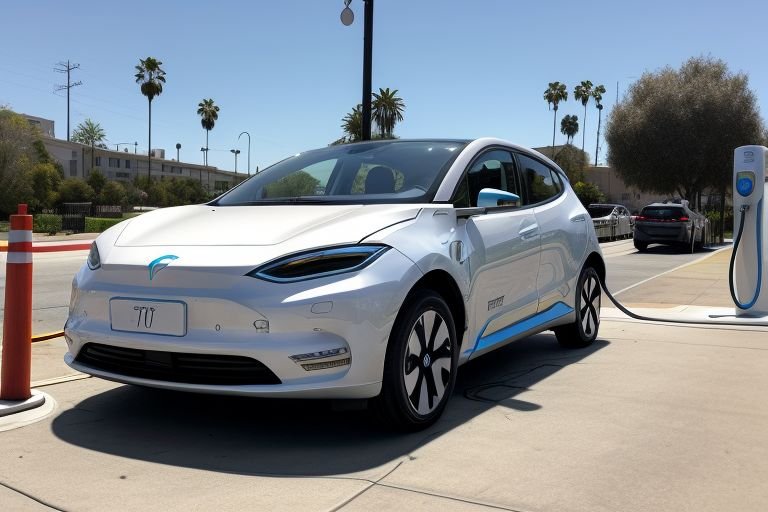
Los Angeles Unveils Ambitious Plan For Electric Vehicle Charging Infrastructure
The Mayor of the City of Los Angeles has recently unveiled ambitious plans to ramp up the development of electric vehicle charging stations, proclaiming the city to be a clean transportation hub. The bold strategy, launched by Mayor Karen Bass together with the Los Angeles Department of Water and Power (LADWP), is set on the installation of 100 000 new public charging stations before 2030 — which will make the city one of the largest networks of e-mobility stations in the US.
This strategic decision follows the escalating uptake of electric car usage in the greater Los Angeles area and is consistent with the California plan of eliminating the sale of new gasoline mobiles by 2035. It has been said that the project should help advance the shift to e-mobility, decrease carbon dioxide emissions, and enhance the quality of the air in a city most of which has suffered from smog and traffic jams.
The strategic plan offers a transition to a broad portfolio of charging types that will benefit LA inhabitants and tourists. Superfast charging stations will therefore be established at areas close to the corridors and at the most exit points to serve individuals who are on long trips. Level 2 charging stations will be properly located in the residents’ neighborhoods, but more specifically in apartments, condos and other places where people cannot charge at home. Furthermore, charging at workplaces will be provided to increase the usage of EVs by those using public transport.
In order to make this new infrastructure accessible for all, the city has pledged to place at least forty percent of the new charging stations located in disadvantaged areas. This to some extent seeks to rectify what currently would be best described as the ‘charging deserts’, of lower income areas, while also seeking to spread the take up of EVs across all the income brackets.
The project expects to generate about thousands of employment opportunities in the Los Angeles region when constructing,installing, maintaining and also operating the project. The city will aim the creation of training programs in cooperation with local colleges and trade schools to provide workers for these new green jobs, increasing the positive impact of this initiative to include both the environment and the citizens’ employment conditions.
The needed financial resources for such major work will be attracted through federal infrastructure loans, incentives of state governments, private capital, and a wee rise in utility tariffs. The LADWP has sought to calm residents by claiming that the hikes in the rate will be low and the longer-term advantages of scarce pollution and better health achievements more than supplement this cost.
Further, the local enterprises are already preparing to capitalise on the prospects created by this drive. At least three of the EV startups based in Los Angeles have noted a rise in investors’ attention after the announcement. These companies are currently working on various new and advanced technique to enhance charging mechanisms, enhance the charging experience of the users and also aiming at incorporating renewable energy into the charging infrastructure.
The increase in the charging stations will also increase the demand of EVs in the Los Angeles region. Car dealers are now stocking their lots with more EVs and working to educate their sales people about the merits of the products. Several dealerships are now looking at charging station manufacturers for embarking on coming up with package deals whereby users will be to install charging stations at their homes as they make purchases of new EVs.
Nevertheless, the plan has its hurdles, as this paper seeks to outline. From this perspective they shall deal with various permit requirements, grid constraints, and complexity of installing charging stations in congested city centers. To address these problems, the mayor’s office created a task force comprising members of several city departments, utilities and nonprofit organizations.
Surprisingly, viewing the announcement from readers has generally been positive, with many of the people I spoke with considering that the city is one step closer to purging the air and reducing reliance on hydrocarbons. However some concerns have been raised on the possible affect on parking in the other areas more so the residential ones as street parking is a scarce commodity. Investors have this time around sought to allay the anger of residents by saying that there will be a proper arrangement of these charging stations in a way that will not affect the usual parking patterns.
It has also drawn attention from other cities in Southern California where interest has developed for integration of their EV infrastructure development blueprint with that of Los Angeles to ensure there is a regional integrated system in place. The strategies proposed within that plan could also help to build additional demand for electric cars among the residents of Southern California as a region.
As Los Angeles moves forwards into making the transportation sector green, the rest of the nation will be looking on. That is why, the success of this initiative can become an example for other large megalopolises, which are interested in the reduction of their carbon emissions and adaptation to the fact of the Development of electric cars. As a modern eco-conscious city whose major priorities are jobs, sustainability and equality of access LA is geared up to become the blueprint of successfully transforming the urban fabric and achieving inclusive clean transport solutions in the 21 st century.


